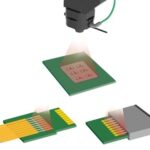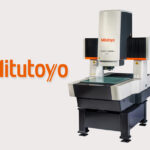ASIA ELECTRONICS INDUSTRYYOUR WINDOW TO SMART MANUFACTURING
Handotai Netsu Develops New Die Bond Technology
Handotai Netsu Kenkyusho KK has developed a new die bond technology suitable for the mounting of silicon carbide (SiC) power semiconductors. Particularly, the proprietary die bond technology uses a 0.1 mm thick thermal conductive sheet. Its formation comes with a silver tin (AgSn) layer on an inexpensive aluminum (Al) thermal stress relief core material.
Moreover, its main use is to bond SiC power semiconductors and copper (Cu) electrodes.
The nickel (Ni) layer controls the AgSn layer formed on the AI thermal stress relation core material. Particularly, by melting a small amount of Sn with a melting point of 232°C and reacting with silver (Ag). Thus, preventing AgSn from infiltrating the Al thermal stress relaxation core material and Cu electrodes.

Emerging Technology
The process also suppresses carkendal void phenomenon, in which voids accumulate at the interface between the joint members. In addition, it stirs clears the 250°C heat test.
It has higher performance than conventional nano-Ag and sintered Ag, and achieves low-temperature short-time bonding similar to Pb solder under the same bonding conditions as lead (Pb) solder. Since the price is close to or cheaper than Pb solder, Handotai Netsu will propose it as a new bonding for inverter circuits for popular EVs (electric vehicles) that use SiC power semiconductors, which will become popular in the future.
Meanwhile, the company has confirmed that a die bond that joins a Si power semiconductor and a Cu electrode with a thermally conductive sheet made of a thermal stress relieving core material of Ag can obtain bonding performance that exceeds that of nano-Ag and sintered Ag.
It has been confirmed experimentally that the bonding result of the Ag thermal stress relaxed core material can be obtained even with the thermal stress relaxation core material of Al, which is inexpensive instead of the precious metal Ag.




